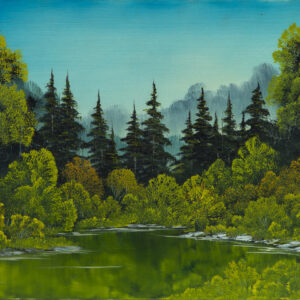 The millennia that followed the last period of glaciation over northern England was a time of significant environmental change. As temperatures rose, the ice retreated further to the north and from the south and east came a ruthless colonist. Sweeping across Britain, it rapidly took over, changing the face of the country forever.
The millennia that followed the last period of glaciation over northern England was a time of significant environmental change. As temperatures rose, the ice retreated further to the north and from the south and east came a ruthless colonist. Sweeping across Britain, it rapidly took over, changing the face of the country forever.
I am, of course, talking about trees. The first wave of colonists were birch, aspen and sallow, followed in around 8500 BC by pine and hazel. Lime, oak, alder and the other deciduous trees followed around about 7300 BC by which time the whole country had been colonised and to a greater height than today.
That is not to say that the entire country was dense woodland, but it would have been a much more covered landscape that it had previously.
It is this dramatic change of environment that is the setting for the Mesolithic.
So how would a change in environment change the way humans lived?
The obvious answer is that the species of prey animals found in a wooded landscape are different from those found on open plains or tundra. Forests may have a plentiful supply of red deer, birds and small mammals, but the large herds of migrating animals such as wild horses are not going to be found. A change of prey animal not only means a difference in hunting practices, but it changes the raw materials available to the hunters. Change the raw materials, and you will often change the way things are made, and the way they look. You also have to change the tools you use. The point that you use to pierce horsehide, may be too big and clumsy for deerskin.
There is also the sudden arrival of a new material in large quantities – wood. Strong, light and easily shaped, it makes for more ergonomic hafts for stone tools than bone and antler. It also allows the application of torsion, levers and the storage of energy in a basic spring. You could say that Lincolnshire grew a technological revolution.
But there are other reasons for change. Remember the nomads home, spread over a large area? That was essentially open plan. Stand at one point and you would probably see most of the territory you lived in. Add trees to the landscape and you no longer have open plan but a series of very small rooms. You can no longer see great distances, travel is slowed and navigation changes completely. Instead of looking at landmarks far away and keeping your direction, you must look at local features and vary your path to the conditions (pilotage is the modern term for this).
These two things, new lighter materials and a closed-in landscape, would have encouraged people to develop tools that they could carry around with them, and use as effectively as possible.
In the archaeological record, we see this as collections of microliths. Small flint blades that would have been combined wood, bone or antler to create composite tools that were light, effective and easily carried as a tool kit.
There are also other changes which have been theorised rather than detected in the archaeological record. It is believed that the numbers of humans were increasing and that they were forming larger groups. It is also believed that the domesticated wolf (or dog) was present in human society by that time (Lincolnshire’s first pets?). It is also theorised by woodland archaeologists that humans began to modify the environment to aid their hunting activities.
It is not easy to hunt in dense woodland. The best places to hunt are along the tree edge and the prey animals gather at these edges because they have the best mix of ground plants and browse (shoots and leaves). It is also easier to ambush a prey animal if you are under cover of the trees and they are out in the open. Whilst this may happen naturally, it is believed that Mesolithic people began creating small clearings by felling trees and allowing the undergrowth to develop.
So while it is tempting to look at the rows of flint tools on display in a museum and think that the Mesolithic was just another stone age period, remember, for the people of Lincolnshire at that time, it was a whole new world.
